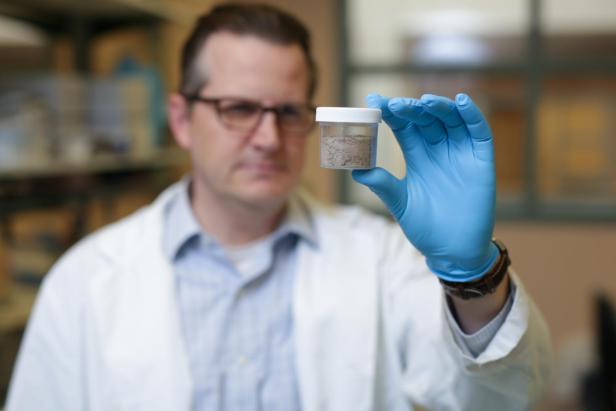First-of-its-kind study estimates daily PFAS dietary exposure from vegetables in adults and children
By Emilie Rusch | Mines Newsroom | November 23, 2020

Read the full article by Emilie Rusch (Mines Newsroom)
“If state and federal regulators focus only on the safety of drinking water, the public could still be exposed to concerning levels of poly- and perfluoroalkyl substances (PFASs) via the vegetables on their dinner plate if those vegetables are grown with PFAS-impacted water, according to a new study from researchers at Colorado School of Mines and engineering firm Geosyntec.
Published today in the journal Environmental Science and Technology, the study is the first of its kind to examine PFAS in water that is used to grow crops. Researchers compiled available data on how much individual PFASs are taken into vegetable crops irrigated with contaminated water – in this case lettuce – to estimate the daily dietary exposure intake through vegetables of these so-called ‘forever chemicals’ for both adults and children.
‘While there has been an emphasis on identifying and cleaning up drinking water impacted by PFASs, much less attention has been given to assessing risks from consuming produce irrigated with PFAS-contaminated water,’ said Juliane Brown, an environmental engineering PhD candidate at Mines who led the research. ‘This study brings much needed attention to this issue and highlights the potential risks associated with this critical exposure pathway.’
PFASs are a large and diverse group of synthetic chemicals used in many commercial and household products, including Class B fire-fighting foams, nonstick-coated cooking pan production, food contact materials, waterproof textiles and many others. An emerging body of evidence shows PFAS exposure can cause cancer and developmental, endocrine, renal and metabolic problems.
Globally, PFAS contamination of irrigation water and soils in agricultural areas has arisen from a variety of sources, including the use of aqueous film forming foam (AFFF) on military bases and airfields, the application of treated sewage sludge as agricultural fertilizer and releases from nearby industrial facilities.
But currently, many state and federal agencies are primarily focused on drinking water exposure, missing a potentially importance exposure pathway via irrigation water, said Christopher Higgins, professor of civil and environmental engineering at Mines and senior author of the study…”
This content provided by the PFAS Project.
Location:
Topics: